Here is a list of popular and simple-to-grow varieties of flowers that start with the letter G.
Flowers That Start With G – List Of Flowers That Name Starts With the Letter ‘G’

Gaillardia
Small perennials in the sunflower family include the Gaillardia flower plant. It features flowers that resemble daisies and comes in a variety of hues, including orange, yellow, and red blooms.
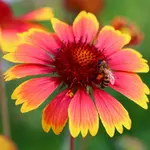
Native to North America, gaillardia plants require little upkeep. They are an excellent addition to any garden because of their lengthy blossoming season!
Their flowers have three or more teeth and are either purple discs or yellow, orange, or white rays, giving the plant a fringed appearance. The majority of them have hairy leaves that either cluster at the plant’s base or alternate throughout the stem.
Gardenia
A stunning flower that is ideal for any garden is the gardenia. It is indigenous to Africa, Asia, and the Pacific Islands and is a member of the madder family.
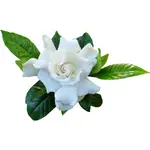
The most well-known variety of Gardenia is the Cape Jasmine, which is indigenous to China. Its lovely scent is one of the reasons it is frequently presented as a gift.
Glossy evergreen leaves on gardenias are typically grouped in whorls or opposites. The tubular, white, or yellow blooms are borne individually or in tiny clusters, and they frequently have a potent perfume. A gooey orange pulp can be found inside the huge, berry-like fruits.
Geranium
A lovely flower that is frequently found in greenhouses and gardens is geranium. This flower has over 300 different species, the majority of which are indigenous to southern Africa. They are a preferred option for both gardeners and florists because of their wide range of colors and sizes. Geraniums require little maintenance and can grow in both sunny and shaded environments.

An unrelated genus called Pelargonium has roughly 280 distinct species of annual, biennial, and perennial plants. These plants, usually known as geraniums, are well-liked options for gardens and greenhouses. Pelargoniums are available in a range of hues and sizes, just like geraniums. They are similarly simple to maintain, however, they favor sunny areas.
The cultivated geraniums of the genus Pelargonium are hybrids of herbaceous and woody plants with thick, meaty leaves that might be spherical, lobed, or deeply cut. The flowers, which appear at the plant’s tip in clusters, are a variety of hues, including white, pink, deep red, and violet.
Geraniums are available with double flowers, varied hues, and petals that are ragged or frilled. Although you may also grow them from seed, stem cuttings are the most common method of propagation. Because of their regular symmetry, elongated flower stalks, and propensity to drop their flower petals quickly and cleanly, a line of seed geraniums that are useful in bedding has been created through the selection and breeding of specific traits.
Gaura
Gaura, also known as wandflower, whirling butterfly, and bee blossom, is a perennial that requires little maintenance and is becoming more and more well-liked by fans of wildflowers.
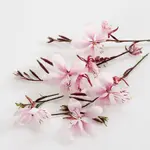
The name “Gaura” comes from the Greek word “gauros,” which means “superb,” and it stands between 15 inches and 4 feet tall. The majority of recent gaura cultivars are small and adaptable to container gardening.
Gaura plants shine for their protracted bloom period, which is significantly longer than that of most other perennials, especially in the early summer.
With lance-shaped leaf that is frequently tinted in pink, cream, or gold, they are best planted in the spring or fall and may be found in the majority of USDA growth zones (5 through 9). Several 1-inch blooms with four petals apiece, each with a different color depending on the kind, are carried by thorny flower stems.
Gerbera
With their bright and vibrant colors, gerbera daisies are almost too lovely to be true, but they are! The South African native Gerbera jamesonii is actually an Aster and belongs to that family. Today’s flowers are a result of hybridization processes.
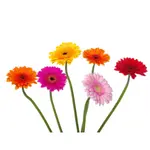
Gerberas, commonly referred to as Gerbera daisies, are lovely blooms that provide color to any garden. They are delicate perennials that grow again each year in the majority of the United States.
These plants, however, are regarded as annuals in regions with harsh winters and no winter protection. After all dangers of frost have passed, spring is the ideal season to grow gerberas. They can be raised outside in garden beds and pots starting from seed. They’ll take time to establish themselves, producing their first blossoms in 14 to 18 weeks and continuing to bloom throughout summer.
Large flower heads with ray-like petals arranged in a disc around a core of tiny green or black blossoms are a distinguishing feature of gerbera daisies. Gerbera daisies can be divided into four groups based on the quantity, placement, and type of petals: a single flower, semi-double flower, double flower, and spider flower. The plant has lobed or pinnate leaves that are frequently serrated.
Gladiolus
The iris family includes flowering plants like the gladiolus, often known as the gladiola. Gladiolus are native to Europe, Africa, and the Mediterranean region, and there are over 300 kinds of them. Several gladiolus species are grown as cut flowers and garden ornaments.
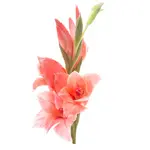
The flowering spike, which normally blooms in the spring, can grow to a height of 60 to 90 cm and is distinguished by the dense cluster of flowers on one side of the stem. The plant’s leaves are sparse and sword-shaped, and each bloom has six petal-like sections.
Goldenrod
A particular kind of plant known as goldenrods (genus Solidago) often grows as a perennial herb. The majority of the 150 species of goldenrods in the globe are indigenous to North America.
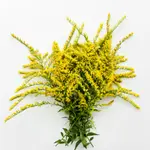
They can be found in a variety of habitats, including fields, roadsides, mountains, swamps, and woodlands. There are about 60 species of goldenrods in eastern North America, and they are very important during autumn.
The serrated leaves on goldenrods typically alternate along the stem. While some species have only one stem and a few branches, others are clumping plants with many stems. Several species of goldenrod have spreading rhizomes that can spread, sometimes violently. Both disc and ray flowers make up the eye-catching yellow flower heads. The numerous little heads may form one-sided clusters when crowded together, or they may be carried in groups on short branches to create a cluster at the stem’s apex.
Goldenrods are a lovely addition to any garden, and because of how quickly they spread, they will quickly take up all available space. But keep a watch on them—if you don’t, they can start to intrude!
Grape Hyacinth
A genus of tiny, perennial bulb plants with 50 or more varieties known as grape hyacinths is indigenous to the Mediterranean. They are lovely, attractive additions to any garden and frequently blossom in the spring. When introducing grape hyacinths to your yard, keep in mind that some types are known for spreading rapidly and turning into weeds.
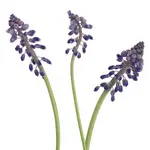
The majority of the species in the genus have clusters of urn-shaped blooms in blue, white, yellow, or pink that is produced at the end of a flower stalk devoid of leaves. Some species’ blossoms have a musky scent. The fruit is a capsule, whereas the leaves are long and narrow and come from an underground bulb.
Gypsophila
Gypsophila is a large and diversified genus of annual and perennial flowers that includes over 150 species. Many of them are planted for their foggy appearance in rock gardens, borders, and floral arrangements; they are native to Eurasia.
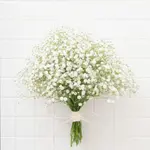
Gypsophila Elegans, an annual plant with narrow blue-green leaves, can grow up to 50 cm (20 inches) tall and has many branches. In particular, varieties like “Carmine” (with deep rose-red flowers), “Grandiflora Alba” (with huge white flowers), and “Rosea” are extensively planted (with rose-pink flowers).